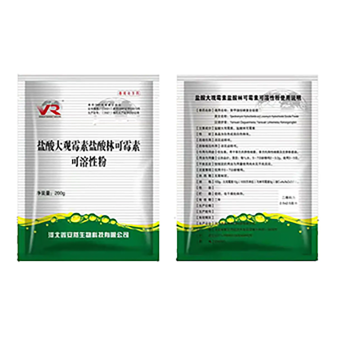- Afrikaans
- Albanian
- Amharic
- Arabic
- Armenian
- Azerbaijani
- Basque
- Belarusian
- Bengali
- Bosnian
- Bulgarian
- Catalan
- Cebuano
- Corsican
- Croatian
- Czech
- Danish
- Dutch
- English
- Esperanto
- Estonian
- Finnish
- French
- Frisian
- Galician
- Georgian
- German
- Greek
- Gujarati
- Haitian Creole
- hausa
- hawaiian
- Hebrew
- Hindi
- Miao
- Hungarian
- Icelandic
- igbo
- Indonesian
- irish
- Italian
- Japanese
- Javanese
- Kannada
- kazakh
- Khmer
- Rwandese
- Korean
- Kurdish
- Kyrgyz
- Lao
- Latin
- Latvian
- Lithuanian
- Luxembourgish
- Macedonian
- Malgashi
- Malay
- Malayalam
- Maltese
- Maori
- Marathi
- Mongolian
- Myanmar
- Nepali
- Norwegian
- Norwegian
- Occitan
- Pashto
- Persian
- Polish
- Portuguese
- Punjabi
- Romanian
- Russian
- Samoan
- Scottish Gaelic
- Serbian
- Sesotho
- Shona
- Sindhi
- Sinhala
- Slovak
- Slovenian
- Somali
- Spanish
- Sundanese
- Swahili
- Swedish
- Tagalog
- Tajik
- Tamil
- Tatar
- Telugu
- Thai
- Turkish
- Turkmen
- Ukrainian
- Urdu
- Uighur
- Uzbek
- Vietnamese
- Welsh
- Bantu
- Yiddish
- Yoruba
- Zulu
нов . 24, 2024 21:08 Back to list
Using Injectable Ivermectin for Effective Goat Deworming Solutions
Worming Goats with Ivermectin Injectable A Comprehensive Guide
Worm infestations pose a significant threat to the health and productivity of goats. These parasites not only impact the well-being of the animals but also influence overall farm profitability. One of the most effective treatments for controlling internal parasites in goats is Ivermectin, particularly in its injectable form. This article will explore the importance of worming goats with Ivermectin injectable and provide guidelines for its effective use.
Understanding the Need for Deworming
Goats are susceptible to various types of gastrointestinal worms, such as Haemonchus contortus and Ostertagia spp. These parasites can lead to symptoms ranging from weight loss and anemia to severe gastrointestinal distress. Regular deworming is crucial in maintaining the herd's health, improving feed efficiency, and ensuring optimal growth rates.
The Role of Ivermectin
Ivermectin is a broad-spectrum antiparasitic agent that has gained popularity among livestock producers due to its efficacy in controlling both internal and external parasites. Its injectable form offers several advantages over oral formulations, including quicker absorption and a more controlled dosage. Ivermectin works by disrupting the nervous system of parasites, ultimately leading to their paralysis and death.
Administration Guidelines
When using Ivermectin injectable for goats, it's essential to follow specific guidelines to ensure safety and effectiveness
1. Determine the Appropriate Dosage Ivermectin is typically dosed at 1 mL per 110 pounds of body weight. However, it's crucial to consult with a veterinarian to determine the correct dosage for individual animals based on their weight and overall health status.
worming goats with ivermectin injectable

2. Choose the Right Timing The best time to administer Ivermectin is during the spring and fall months, coinciding with peak parasite seasons. However, if goats show signs of infestation, immediate treatment may be necessary.
3. Injection Technique Ivermectin should be injected subcutaneously, usually in the loose skin behind the neck or in the shoulder region. Ensure that the injection site is clean and free from contaminants to minimize the risk of infection.
4. Monitor After Treatment After administration, observe the goats for any adverse reactions, which are rare, but can include temporary lethargy or mild swelling at the injection site. Keeping records of treatments will help in managing overall flock health.
Best Practices for Worm Management
While Ivermectin injectable is effective, it’s essential to incorporate it into a comprehensive parasite management program. Rotating dewormers, practicing good pasture management, and conducting regular fecal egg count tests are vital steps in controlling worm populations.
Additionally, consider integrating natural deworming strategies, such as herbal treatments and maintaining a mixed grazing system, which can help reduce reliance on chemical dewormers.
Conclusion
Worming goats with Ivermectin injectable is an essential practice for maintaining herd health and productivity. By following the guidelines for administration and incorporating it into a holistic parasite management program, goat owners can significantly reduce the risk of worm infestations. Regular veterinary consultations further ensure that the deworming strategy is effective and aligned with best practices. This proactive approach will not only enhance the health of individual goats but will also contribute to the success of the entire flock.
-
Guide to Oxytetracycline Injection
NewsMar.27,2025
-
Guide to Colistin Sulphate
NewsMar.27,2025
-
Gentamicin Sulfate: Uses, Price, And Key Information
NewsMar.27,2025
-
Enrofloxacin Injection: Uses, Price, And Supplier Information
NewsMar.27,2025
-
Dexamethasone Sodium Phosphate Injection: Uses, Price, And Key Information
NewsMar.27,2025
-
Albendazole Tablet: Uses, Dosage, Cost, And Key Information
NewsMar.27,2025













